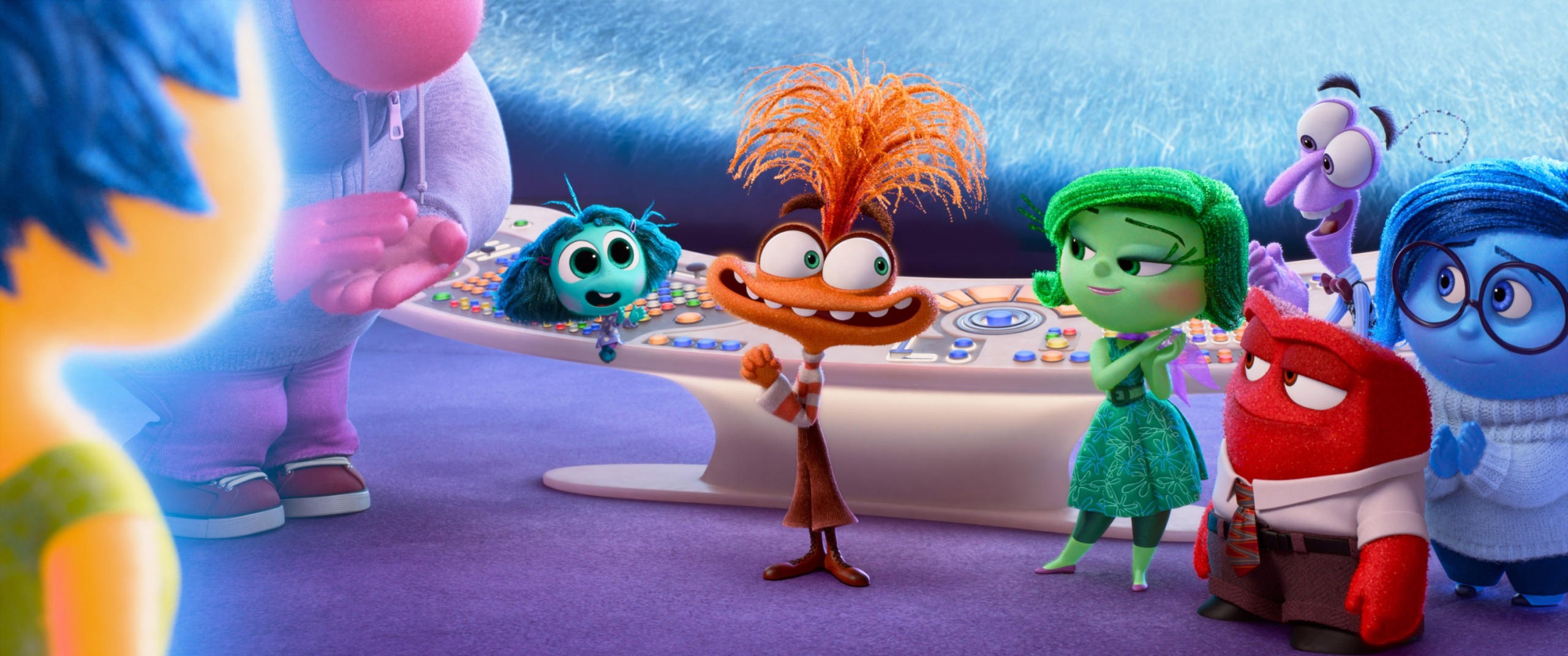One of the highest-grossing animated productions of all time, Pixar’s “Inside Out 2” has already reached a key milestone: $1 billion at the worldwide box office.
A substantial chunk of that impressive total came from Spanish-speaking Latin America, where the film is known as “IntensaMente 2.” The title used in those countries literally means “Intensely,” but it’s also a play on the words “Intense” and “Mind.” Meanwhile, the name in Spain, “Del Revés,” is a less ingenious, verbatim translation of “Inside Out.” Dubs and titles for most movies, and definitely for Disney films, differ in Spain and Latin America.
In Mexico, a country with a long-standing movie-going culture, “Inside Out 2” has already amassed a whopping $81.8 million (around 1.5 billion pesos), surpassing “Avengers: Endgame.” The animated sequel is now the second most profitable film of all time in Mexico, only behind “The Super Mario Bros. Movie” ($85.3 million). Meanwhile, Mexico’s “Inside Out 2” gross amounts to 8 percent of the movie’s entire take so far, making Mexico the most lucrative international market for the Pixar sequel. The feat makes sense since Mexico is the second most populated country in Latin America and the world’s most-populated Spanish-speaking nation. This means that the majority of Spanish-speaking media consumers live in Mexico. (By the way, Mexico also led the international box office for 2015’s “Inside Out” at $31 million unadjusted.)
One reason why Mexican audiences flock to American animated features might be that historically the Spanish-language dub heard across Latin America for most of those projects, including “Inside Out 2,” is produced in Mexico. Mexican voice actors still enjoy a great reputation in the industry, even in an age where star casting has also become standard in the country, with YouTubers and social media personalities often being cast.
Mexican viewers can hear the characters speak with a local accent and see the story infused with culturally specific humor that hopefully also resonates across the region. The Latin American dub of “Shrek,” for one, featured Mexican comedian Eugenio Derbez as Donkey, making for a memorable viewing experience tailored to local ticket buyers.
Thinking specifically about Disney, the relationship between the animation giant and Mexico goes back to the 1940s when Walt Disney himself, as part of the U.S. efforts to repel Nazi influence in Latin America, established strong relationships with Mexican institutions and was even awarded several honors by the Mexican government throughout his life for what was perceived as efforts to highlight Mexican culture, via the Disneyland Park in films such as 1944’s “The Three Caballeros,” which premiered in Mexico City.

Disney animated productions have long enjoyed a warm reception from Mexican audiences, likely also because, until recently, the country didn’t produce its own animated projects. Even when homegrown offerings do come to fruition, Mexican audiences have long been conditioned to prefer Hollywood imports and to think of Mexican films, animated and live-action, as subpar compared to those made abroad. That mentality, often referred to as “malinchismo,” permeates not only Mexico but most of Latin America.
Mexican Social Media Gets Emotion-al
Since its release, the success of “Inside Out 2” in Mexico reflects in the humorous social media reactions that speak about the movie’s notable cultural presence.
Though tracking a meme’s origins in the ever-changing internet is nearly impossible, one “Inside Out 2” meme that seems to have originated, or at least taken off among Mexican Twitter (X) and Instagram users, features a photo of the original emotions and the caption “A new emotion?” in Spanish, with another image below Anxiety replaced by another less conventional, more adult “emotion” as a clever satirical joke.
One “Inside Out 2” video trend on TikTok has become popular among Mexican users. Numerous posts show the creator jokingly addressing Riley, the young protagonist of the animated film, to warn her that the anxiety she experienced during her hockey camp is only the tip of the iceberg. As one gets older, the creators explain, those feelings of inadequacy and uncertainty only become more intense. All these videos begin with the poster saying, “Uy no Riley, y espérate,” or “Oof Riley, just wait until…,” followed by a warning on the perils of dating or the difficulties of everyday life as an adult, as if they were communicating to the adolescent girl directly that she’s not ready for what’s coming.
An even more recent Twitter/X prompt reads, “las emociones de mi cabeza si hicieran ‘Inside Out’” (the emotions in my head if they made “Inside Out”) featuring a photo of a group of well-known characters meant to represent the personality of the poster.
Mexico Has Popcorn Bucket Wars, Too
Long before the craze around the “Dune: Part Two” popcorn bucket in the U.S., Mexican theater chains had already perfected this moneymaking ancillary market. Often, the popcorn containers released by Cinemex and Cinepolis, the country’s most prominent exhibitors, are far more creative in design than their American counterparts. With plenty of collectors and resellers on the hunt for the popcorn buckets, the two chains engage in an unspoken competition, often releasing different collectible items for the same Hollywood movie.
For “Inside Out 2,” Cinépolis released a detailed container in the shape of Sadness, the downhearted scene-stealer of the franchise, while Cinemex’s bucket resembles the jar where Anxiety jails the core emotions, which also doubles as a coin bank. The latter features figurines of the characters inside the transparent vessel, which also lights up. As they often do with other titles, both exhibitors also sell exclusive “Inside Out 2”-themed cups.
Last year, in addition to popcorn buckets for most major theatrical releases, Cinemex also commemorated the 100th anniversary of the Walt Disney Company with 12 different popcorn buckets, one per month, based on a variety of films and shows, including “WALL-E,” “Iron Man,” “Coco,” “The Mandalorian,” and “Fantasia,” banking on nostalgia of all ages in the process.
With increased prices and streaming services vying for cash and eyeballs, watching a movie in theaters has gone from a weekly, casual outing to a once-a-season trip for a lot of families. But look to the Mexican market for how audiences will help make “event” movies like “Inside Out 2” a true global sensation — not just by engaging with the movie itself, but taking the conversation to social media, and home with them with exclusive offerings.




